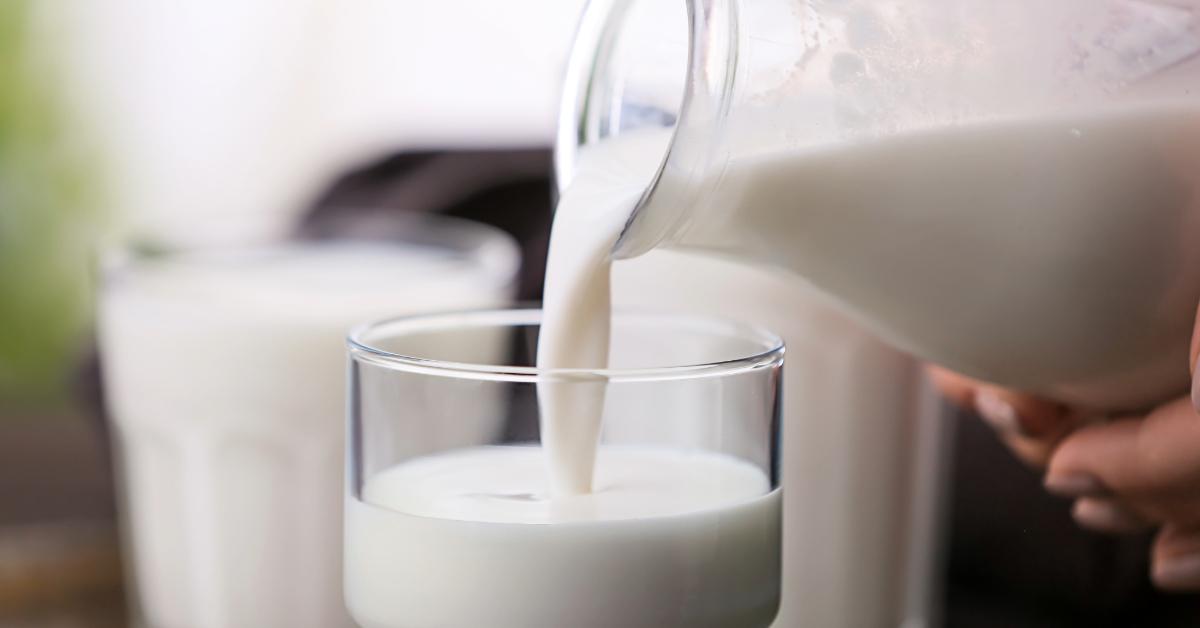
“Salus populi suprema lex.” The health of the people is the supreme law.
As ruling ideals go, this is a good one. Unfortunately, the governing class in America decided long ago that raw milk—one of nature’s most perfectly nutritious substances—must be regulated and prohibited to the point of making it nearly impossible to obtain. In its place, they teamed with the dairy industry to promote pasteurized milk, a lifeless liquid so devoid of the natural beneficial compounds found in raw milk that it should more accurately be called a “milk-like substance.”
In spite of government restrictions, freedom-minded and health-conscious citizens would do well to find good, clean sources of raw milk, consume it often, and encourage others to do the same.
The Genesis of the Government’s War on Raw Milk
In the nineteenth century, the birth of the domestic liquor industry in America combined with mass migration from rural to urban areas to create a “dark age” for raw milk, one that is still referenced by the government and the pasteurization lobby to argue against the removal of prohibitions on raw milk.
As farmers and other rural transplants moved into cities, they would bring their dairy cows with them, often exposing them to unsanitary, crowded, and cramped conditions while robbing them of grass, their natural food. In the absence of natural food, cows would often be fed “swill” or “slop,” the waste product of liquor-making at city distilleries.
Over time this set of unsanitary conditions contributed to significant illness and death, including in children, as a result of consuming contaminated raw milk.
As pasteurization took hold as a method of sterilization in the late nineteenth and early twentieth centuries, two separate tracks evolved for milk consumption—one for pasteurization and another for raw milk certification, which involved standards for cleanliness and freshness of raw milk set by a private organization of doctors. This bifurcation in the way milk was produced and consumed lasted until roughly the middle of the twentieth century, after which the pasteurization lobby ramped up an ultimately successful fearmongering public relations and lobbying campaign against raw milk. The end result was a series of prohibitions at the federal and state levels that make it difficult, and in some cases legally impossible, to obtain raw milk for human consumption.
The Raw Milk Debate: Talking Points and Rebuttals
Enumerating and dissecting all of the arguments for and against raw milk consumption would be impractical. However, a number of the talking points used against raw milk consumption can be easily debunked.
Talking Point: Raw milk has caused numerous deaths, including in children, throughout history. “In developing countries today, from India to Africa, raw milk is routinely boiled before being fed to babies, children, and other family members.”
Rebuttal: Yes, developing countries such as India and those in much of Africa, which are relatively filthy, do not sustain conditions sanitary enough for the production of raw milk. This is an argument against the cleanliness of those countries, not the desirability of raw milk.
Talking Point: Pasteurized milk is safer since raw milk contains harmful pathogens that can cause sickness, hospitalization, and death. The pasteurization process removes those risks.
Rebuttal: This is a slight modification of the prior argument. Notice that it makes no distinction between raw milk intended for pasteurization and raw milk intended for direct consumption. The process upstream from pasteurization requires no cleanliness standards since any harmful bacteria are thought to be destroyed during the process itself. Pasteurization excuses filth.
Furthermore, a 2022 study that performed “a systematic review of dairy-associated outbreaks in Canada and the USA from 2007 onward” found a higher number of hospitalizations and deaths from pasteurized product outbreaks than from those related to unpasteurized products:
Thirty-two disease outbreaks were linked to dairy consumption. Twenty outbreaks involving unpasteurized products resulted in 449 confirmed cases of illness, 124 hospitalizations, and five deaths. Twelve outbreaks involving pasteurized products resulted in 174 confirmed cases of illness, 134 hospitalizations, 17 deaths, and seven fetal losses. Listeria accounted for 10 out of 12 outbreaks from pasteurized products from 2007 through 2020.
Talking Point: Pasteurization doesn’t destroy all the nutrients in milk. “Analyses of the nutritional components of raw and pasteurized milk revealed no significant differences for the major nutritional components such as proteins, carbohydrates, and vitamins.”
Rebuttal: Yes, a macronutrient panel might show similar components when comparing raw milk to pasteurized milk. But the key concept here is bioavailability. Through pasteurization, key enzymes and compounds required to make these macronutrients absorbable and effective in the body (“bioavailable”) are destroyed.
Talking Point: Several studies, primarily in Europe, have found strong evidence supporting reduced childhood allergies and asthma from raw milk consumption, but these are not conclusive since correlation is not causation.
Rebuttal: Causation is impossible to prove in such instances, given the nature of epidemiological science and the sheer number of variables at play in these studies. The fact is that several studies showed significant positive differences in child health when comparing raw milk drinkers with pasteurized milk drinkers. No correlation was found between lower incidence of childhood sickness and consumption of pasteurized milk.
Distrust Government, Especially When It Comes to Your Health
From the food pyramid to the war on dietary fat to the obesity epidemic in America and the recent myriad failures surrounding covid-19, it is obvious that government is not just useless but harmful when it comes to personal physical health.
In addition to being super nutritious, raw milk tastes delicious. Bought locally from a clean and well-run farm, the safety and health of raw milk consumption is proven. Don’t let the sickly bureaucrats tell you otherwise.


